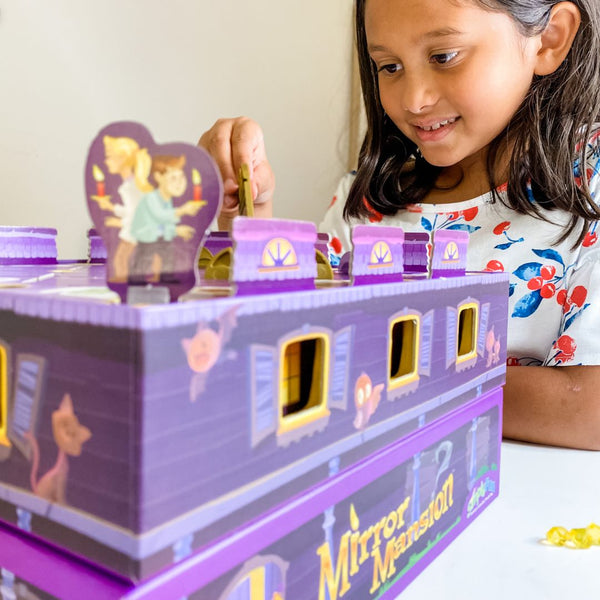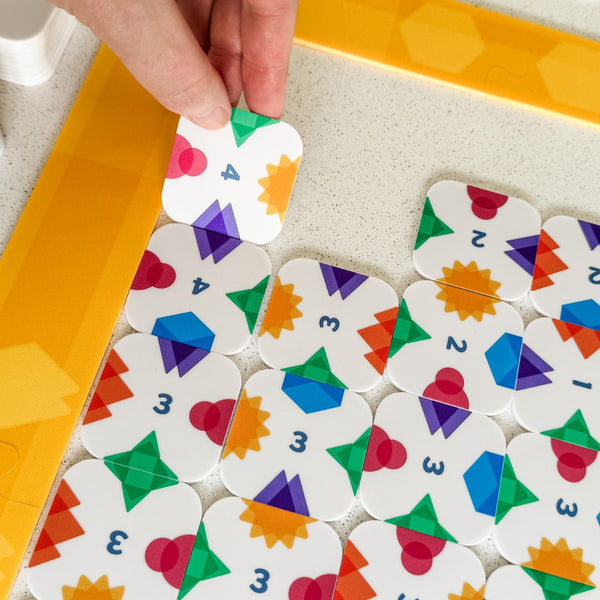Geometry Games – Are You Searching for the Right Thing?

Did you know we play with geometry every day of our lives? Just think, the average family eats pizza 30 times in a year and that pie, whether a big circle or a square, needs to be divided up into relatively equal pieces. You use geometry to do that which means we have just accounted for at least one month of the year of geometry use in your daily life. Play sports? Think about all those angles needed to kick the soccer ball into the net, arc a ball around a hazard in golf, hit a slapshot off the wall in hockey? Sounds like geometry games. Do you like making paper snowflakes, origami, or creating sketches and art? More geometry. And if you knocked down a spider web, well you just destroyed a geometric marvel of design! There are so many geometry examples in our daily lives, but how often do we think of them in relation to the study of geometry?
Let’s begin with how such a common thing got such a big name, like geometry. Well from the Greeks of course, but more importantly how did its use evolve? The early meaning of geometry related to the measurement of the earth and land, but then over time moved to more abstract concepts like spatial reasoning. When you think about it, it’s in everything that we do. So, when looking at games that involve spatial reasoning, angles, and working with shapes, you are essentially playing a game that heavily involves geometry.
Geometry Learning Starts Young
Geometry learning starts young, but it’s not called that…it’s called learning basic shapes and is often paired with colors.
Shape sorters, shape puzzles, even blocks are all early forms of geometry puzzle games and standard early learning tools. As we get older, the learning continues but starts to include big and intimidating words like Rhombus and prism (remember when those were just diamonds and triangles?) or geometry formulas like The Fibonacci Spiral(see it every day in the center of a sunflower as that’s how the seeds grow!)
How it is taught is different too, with lines and angles, vertices and planes. This transition can cause us to get lost in the big words because we stop connecting what we are learning to what we are experiencing in our daily world.
From the buildings we live and work in, to the furniture we sit on or the food that we cook. You can’t enjoy any of those things without the existence of geometry. Geometry after all is all around us!
When you are trying to supplement your geometry learning, the best place to begin is with games that use geometry concepts. They might not be labeled as geometry board games, but they are likely packed with all the concepts.
Here are a few examples of searchable terms and games with those attributes:
Games with Shapes:
Two dimensional:
Diggers Garden Match, Katachi, Corner Center Match
Three dimensional:
Kilter, Ice Tumble
Games with Angles:
Games with Spatial Reasoning:
Glow Spotters, SlideAscope, Rolling Tides
Geometry Games:
Make Geometry Learning Effective by Making it Fun!
The key to learning geometry effectively is to make it fun, creative, exciting, and interactive. Fortunately, the games listed above, do just that! Let's eliminate the misconception that geometry is a daunting subject to master and instead make it accessible and engaging for students by incorporating fun geometry games. These games help players learn while they play, making the process more enjoyable and hands-on for everyone.
Shop Games:





